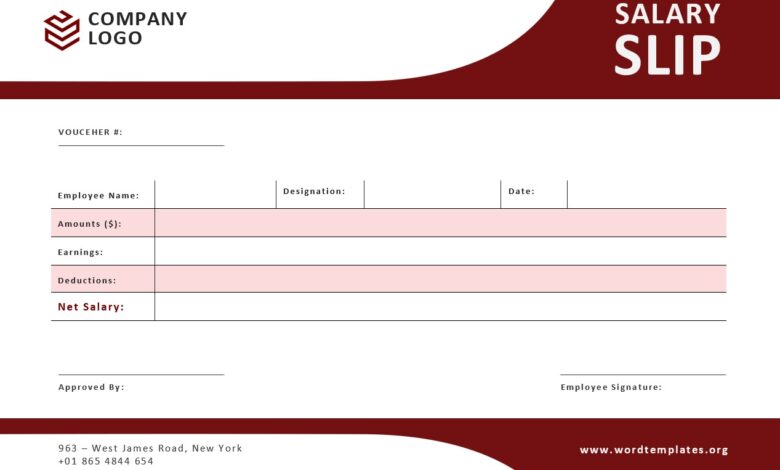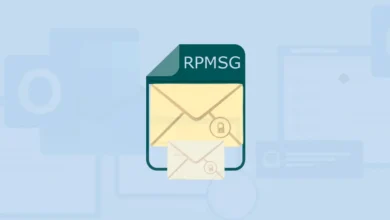Salary Slip: A Key Document for Working Professionals

A salary slip is a document that an employer issues every month to its employees and serves as a financial record. The document features key details such as employee salary and deduction for a given month. Companies are legally required to issue a salary slip to their employees as proof of payment and deductions.
Typically, employees receive a soft copy of the salary slip via email. Since a salary slip serves as proof of payment, it is deemed a key document for different official use. This makes it important to have a full understanding of one’s salary slip and its components.
Read along to know more about a salary slip.
Why Should You Know about the Components of Your Salary Slip?
It is important to understand the salary slip format and its components to understand more about one’s earnings and deductions. Besides that, having an insight into the terms and figures in a pay slip format comes in handy in these ways:
- Helps choose a lucrative offer
- Allows to make the most of tax benefits by availing of the applicable deductions
- Offers an idea about what percentage of your earnings is forced savings, i.e., EPF, ESI, etc.
Components of a Pay Slip
A regular salary slip features key details such as the employer’s name, employee’s name, employee code, and designation, among others. It also features important financial details which can be grouped into two categories, namely, income and deductions.
- Income
The income part of one’s salary slip comprises basic salary and allowances.
- Basic salary
On the earnings side of a salary slip basic happens to be the first component.
The basic component makes up 35-50% of one’s salary and forms the basis of other salary components. The basic tends to constitute a higher portion of the salary at junior levels, and as one moves to higher levels in an organization the allowances part of the salary tends to get higher.
- Dearness Allowance
This is paid to help offset the impact of inflation on the employee’s earnings. It makes up 30-40% of one’s basic pay, and the percentage of the same is based on per cost of living. This is why, dearness allowance tends to vary among locations.
Notably, DA and basic are treated as income earnings under income tax and are taxed accordingly.
- House Rent Allowance
This allowance is offered to employees who are living in a rented flat. The percentage of the same depends on the city where the employee resides. For instance, the HRA is 40% of the basic for employees residing in cities, whereas, it is 50% for those residing in metro cities. Notably, being a type of allowance, HRA is exempted from taxes, given the employees pay rent. However, there’s a limit to the exemption, which happens to be the lowest of the following –
- (Rent paid annually) – (10% of the pay)
- HRA received
- 50% of (basic + DA) in case of metro cities or 40% of (basic + DA in case of other cities)
- Conveyance Allowance
It is the amount a company pays an employee to commute to and from work. Since it is an allowance it is exempted from taxes up to a certain limit. One can avoid income tax on conveyance allowance and the exemption is usually the minimum of the following:
- Rs. 1600 per month
- Conveyance allowance received
- Medical Allowance
It is the amount paid by a company for an employee’s medical spending which he/she incurred during the course of their employment. Employees can save taxes on medical allowance, only if the medical bills are submitted as proof. Notably, an allowance of a maximum of Rs. 15,000 is exempted from taxes. In case the employee fails to submit the medical bills, then the medical allowance they receive will be liable for taxation.
- Leave Travel Allowance
This allowance is paid to cover the expense of the employee’s travel while on leave. The same also accounts for the travel expenses of the employee’s immediate family. However, proof of travel must be presented to claim the deduction, which is also subject to certain limitations. For instance, any expenses incurred by the employee during the trip that are not related to travel won’t qualify for the leave travel allowance exemption. Additionally, such an exemption is only valid for two trips made within a four-year window.
Special Allowance in Salary
This is inclusive of performance-based allowances and is given to encourage employees to perform better. It should be noted that special allowances are liable for taxation.
- Deductions
The deduction components of a salary slip are – professional tax, Employee Provident Fund, and TDS.
- Professional Tax
A professional tax is a minor tax applied by the state governments on all earning professionals. However, the same is applicable only to a few states:
- Karnataka
- Tamil Nadu
- Andhra Pradesh
- Telangana
- Assam
- West Bengal
- Kerala
- Maharashtra
- Gujarat
- Chhattisgarh
- Meghalaya
- Orissa
- Bihar
- Madhya Pradesh
- Tripura
- Jharkhand
Besides professionals, this deduction is also applicable to those earning a living via a medium. Note that the professional tax amount is subtracted from one’s taxable income. This monthly tax is subject to gross tax slab and is usually only a few hundred rupees.
- Standard Deduction
Under both the old tax regime and new tax regime, a deduction of Rs 50,000 is permitted for employees. However, the transportation allowance amount and medical reimbursement have been replaced by this standard deduction.
- Tax Deducted at Source
It is the amount that the employer deducts on behalf of the Income Tax Department of India. It is calculated using the employee’s gross tax slab. However, employees can lower this tax burden by investing in tax-saving investment assets such as Public Provident Fund, equity funds (ELSS), National Pension Scheme, and tax-saving FDs. By parking money into Income Tax Act section 80C instruments, individuals can increase the amount of their take-home salary. However, they must submit proof of investment to successfully claim the TDS returns.
- Employee Provident Fund
EPF is the employee’s contribution toward a provident fund and it is deductible under Section 80C of the Income Tax Act. Essentially, a provident fund is a corpus that is accumulated to offer a stream of income during retirement. Note that an EPF is governed by the Employees’ Provident Fund Organisation and 12% of an employee’s total base pay goes toward it. Additionally, the employer also contributes to it.
However, not all contributions to EFP are directed to the fund. The Employees’ Pension Scheme receives 8.33% of the employee contribution. If their annual salary exceeds Rs. 15,000, the contribution amounts to Rs. 1,250. On the other hand, employees earning less than Rs. 5,000 contribute 8.33% to the Employees’ Pension Scheme. Then the remainder is invested in the EPF plan. However, employees have the option to opt out of EPF.
Importance of Salary Slip
A salary slip serves as an important employment certificate and proof of payment in exchange for service. Additionally, it serves as a crucial document that helps in the following ways:
- Acts as proof of employment
- Helps in income tax planning
- Aids in seeking future employment
- Helps avail of loans and credit cards
- Proves useful in applying for a government subsidy



